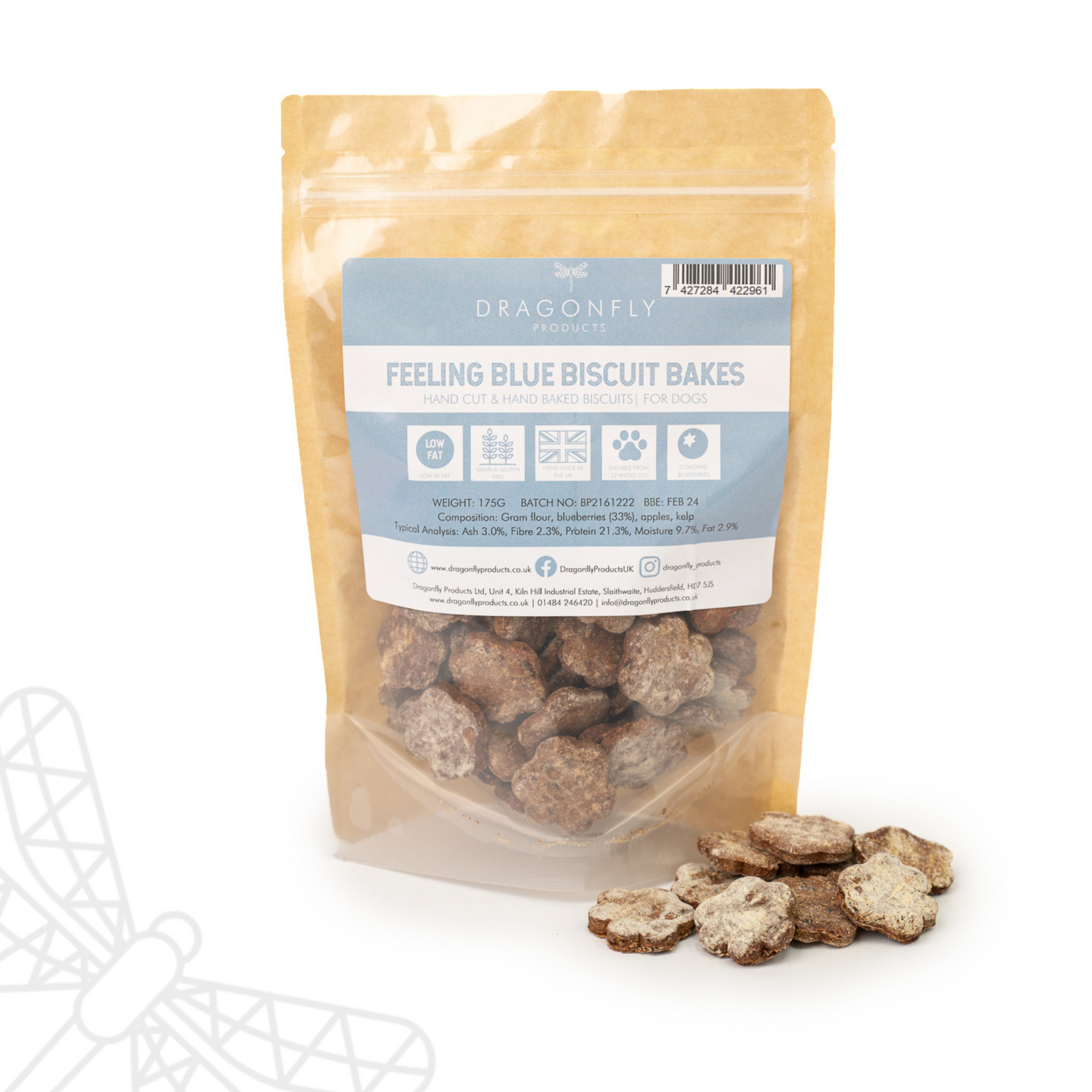
How Long Can You Leave Your Dog Alone?
We all know if dogs had their way, they would never leave your side - and perhaps the feeling is mutual!
The world isn’t entirely dog-friendly however, and there are times when you’ll need to leave your pooch at home alone. But how long should you leave your dog alone in the house? Will your dog get lonely when left at home?
Let us answer your burning questions and explain the best practice when being away from your dog for short periods.
Table of Contents
- How long can you legally leave a dog alone in the UK?
- Do dogs get lonely when left alone?
- Why some dogs struggle more when left alone
- What are the symptoms of separation anxiety?
- How to prepare for leaving your dog at home alone
- How will I know my dog is happy at home alone?
How long can you legally leave a dog alone in the UK?
There is no legal requirement around how long you can leave a dog alone, however, it’s generally advised to leave a dog for no more than 6-8 hours by themselves.
You are legally expected to provide for your dog’s needs and be responsible for their welfare. This includes providing access to food, water, and shelter; ensuring adequate exercise and mental stimulation; and protecting them from pain, suffering and distress.
Though there are no specific legalities, if you leave your dog alone regularly for more than 6-8 hours at a time, it could be deemed neglectful and detrimental to their physical and mental well-being.
Do dogs get lonely when left alone?
When you leave your dog behind in the house, they can seem so bereft - leaving you feeling very guilty!
The reality is, that domestic dogs are social by nature and relish in companionship, so they don’t enjoy being left alone for long periods.
If they have another dog or pet around, this can ease their anxiety somewhat, but still, your dog will probably pine for you until you come home.
Why some dogs struggle more when left alone
Your dog’s age, breed and individual temperament can all have an impact on how they will behave when left alone.
Age.
Very young and very old dogs don’t do well when left at home alone.
Puppies shouldn’t be left at home alone for more than an hour or so, as they tend to get themselves into mischief and feel more distress when separated, just like human children.
Puppies are prone to experiencing separation anxiety which can lead to destructive and harder-to-train behaviour in adulthood, so preventative training should be approached early on.
Senior dogs can struggle to move between rooms, may suffer from health issues or need to pee more often, so will need more consistent human company.
Breed.
Some dogs are genetically pre-disposed to be quite clingy or very social (such as Labradors, Retrievers, and Collies; or lap dogs like Shih Tzus, Poodles, and Chihuahuas), so find it harder in isolation.
Working dog breeds prefer to have a purpose, so can also struggle when left alone. Others are very secure in their independence (such as Chow-Chows, Afghan Hounds or Scottish Terriers).
Individual temperament.
The personality of your dog is one of the biggest sway factors in how they’ll behave when alone.
If they’ve had traumatic experiences being left alone in the past, or they’re quite a hyperactive pooch, they will be more likely to suffer from separation anxiety.
Circumstance.
Your pooch may have recently lost an animal companion, or something stressful may have happened recently (fireworks, a house move, a domestic dispute) that has them experiencing separation anxiety more than usual.
What are the symptoms of separation anxiety?
Your pooch may be suffering when left alone, and this isn’t something you should shrug off.
You’ll be able to tell if your pooch gets distressed each time you leave; but if possible, install a webcam or security camera in your home so you can assess how they behave when you’re not there.
If they show signs of separation anxiety, this means you’ll need to develop a strategy to keep your dog feeling calm and safe.
Here are the most common signs of separation anxiety:
- Panic when you leave. In the first few minutes after you leave the house, an anxious pooch will seem frantic; they might pace, scratch at the door, bark and drool.
- Excessive barking and howling. Your dog may continue to bark, whine and howl long after you’ve gone.
- Destructive behaviour. To channel their anxious energy, your dog may destroy things by chewing them, scratching on them or pulling them apart.
- Chewing things. Your pooch may chew and eat things they shouldn’t, such as carpet, the edges of door frames, cushions or curtain fabric.
- Pacing. A frantic dog will pace around the house, potentially walking up and down in the same spot, unable to settle.
- Attempting to escape. Your dog will scratch at doors, stick their nose into gaps and paw at window panes to try and escape.
- Loss of appetite. While your pooch is alone, they won’t eat or drink as normal as their adrenaline is too high.
- Going to the toilet indoors. Distress may lead your dog to pee or poop in the house when they’re usually well toilet trained.
- Over-excitable when greeting. Your dog will be overwhelmed with emotion when you return.
- Clinginess. In fear that you’ll leave again, your dog will snuggle up to you, sit on your lap, lick you excessively and rarely keep you out of sight (again, more than usual for a dog).
How to prepare for leaving your dog at home alone
We know it can be nerve-wracking leaving your dog in isolation for periods of time, but with the right approach they should eventually get used to it.
Here are some tips for having them feel safe and secure when alone in the house.
- Create a calm, safe environment. Your pooch must feel like their home is a place of security and safety, so be sure to have a comfortable sleeping space, blankets, comfort toys and enough food and water available. You could also play some non-intrusive music or leave the radio on (tuned to a calm, chatty station). To take an extra cautionary step to ensure their safety, be sure to remove their collar, and any jumpers or neckerchiefs, before leaving them alone. This helps avoid any chance of choking or them getting stuck whilst on their own.
- Introduce ‘alone time’ when you’re still in the house. It can be helpful for a dog to get used to being alone. You could make a place in the house where your pooch has ‘alone time’, perhaps behind a stair gate, and regularly put them in there with blankets, toys and a long-lasting chew treat. Pop your head in occasionally so they know you’re around, and they’ll get used to seeing ‘alone time’ as a chance to relax.
- Stick to a schedule. It can’t always be this way, but if your dog expects you to go out at certain times, this can reassure them that you’ll return.
- Feed them a nutritious, well-balanced diet, as harmony in the gut is directly linked to mood. Fatty foods with lots of artificial ingredients will only increase a dog’s anxiety, so steer clear. Add calming supplements such as calming dog treats or even our long-lasting chews infused with chamomile, a natural relaxant. If you're leaving your dog with chews or treats, it's crucial you consider any choking hazards, and make sure they have access to plenty of clean drinking water.
- Leave lots of puzzle toys in the house. The mental stimulation from puzzle toys will distract your dog and make them feel cool as a cucumber. Chew toys are also naturally calming for dogs, as chewing releases a bunch of endorphins.
- Consider a dog walker or doggy daycare. If your dog has to be left alone for particularly long periods (such as when you’re at work), hire a friendly dog walker or pet sitter to come around and break up the day for them.
How will I know my dog is happy at home alone?
You’ll know your pooch is content to be alone because they’ll seem calm and at ease around the house.
Signs that they’re feeling safe include:
- Sitting or sleeping in a favourite spot, such as their bed or by a window
- Eating and drinking as usual
- Greeting you normally (not frantically or overexcitedly) when you return to the house.
- Won't be engaging in destructive or distressed behaviour like barking, howling or destroying things.
The best way to keep an eye on them is by installing a camera monitor so you can be sure they’re ok when left at home. Your dog’s wellbeing should be a top priority, and if they need more companionship than you can allow in your schedule, it’s worth splitting time with a trusted friend or family member.
For any further help and advice please contact us on 01484 246420 and why not join our social media channels and online community on Instagram, Facebook or YouTube.
With Wags and Woofs,
Laura, Dolly & Reggie


